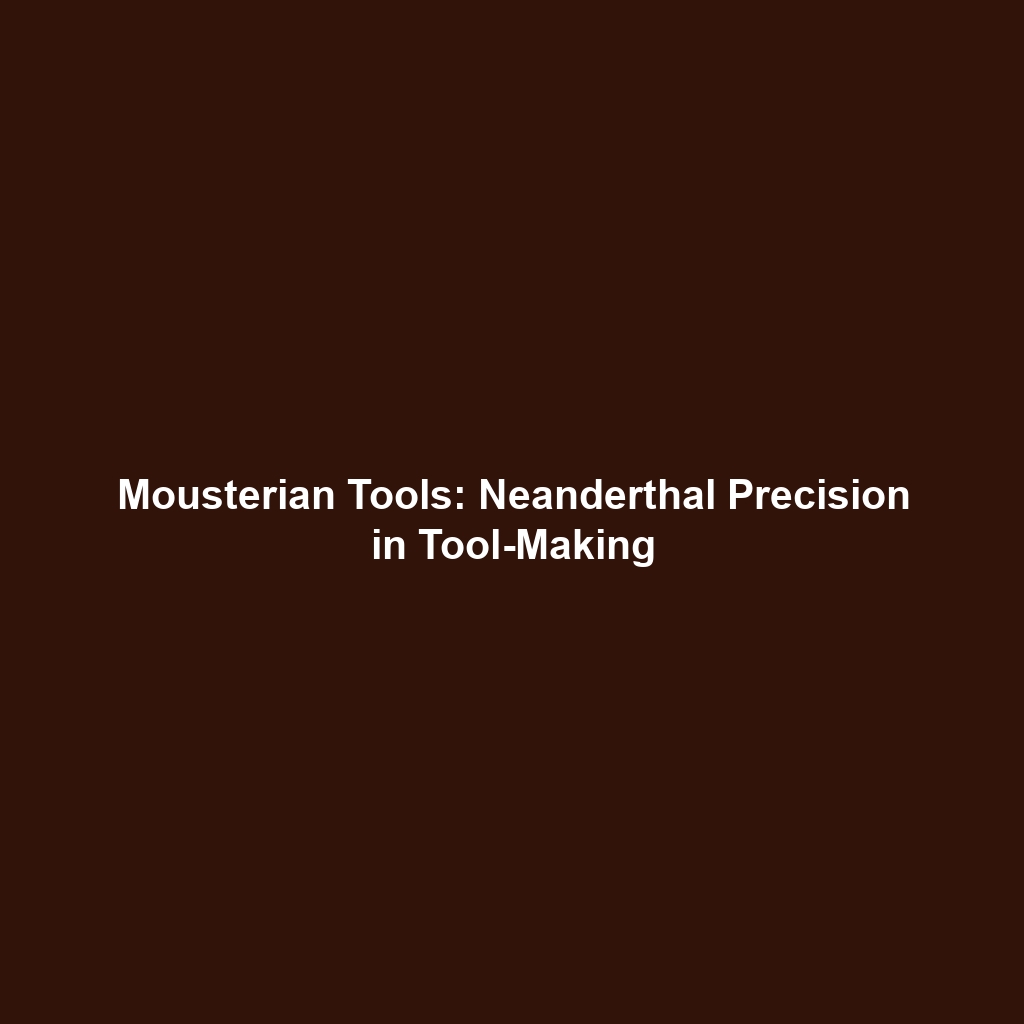Mousterian Tools: The More Sophisticated Tool-Making Techniques of Neanderthals
Mousterian tools, synonymous with the Neanderthals, highlight a significant leap in prehistoric tool-making techniques. These tools, characterized by their sophistication, precise craftsmanship, and evidence of advanced planning, have become a vital area of study in the realm of Human Evolution. Understanding these tools provides key insights into the cognitive abilities of Neanderthals and their adaptability to environmental challenges. The implications of these findings resonate throughout the field of anthropology and beyond, enhancing our comprehension of human ancestors and their socio-cultural dynamics.
Key Concepts of Mousterian Tools
The development of Mousterian tools marks a pivotal phase in the history of human technology. These tools are classified under the Middle Paleolithic period and are primarily associated with the Neanderthals, showcasing significant advancements in craftsmanship and the conceptualization of tools. Major concepts related to Mousterian tools include:
- Flake Technology: Mousterian tools often employ flake techniques, which involve striking a core stone to produce various sharp tools.
- Standardization: The consistent design and size of Mousterian tools indicate a level of planning and foresight not seen in earlier stone tools.
- Functional Diversity: Mousterian tools served a multitude of purposes, from butchering animals to woodworking, reflecting an adaptive approach to diverse environments.
These concepts not only illustrate the advancements within Neanderthal tool-making but also establish Mousterian tools as a crucial evidence of human evolution.
Applications and Real-World Uses
The study of Mousterian tools provides compelling applications within the context of Human Evolution. Here are some notable real-world uses:
- Archaeological Insights: Understanding Mousterian tool use contributes to reconstructing Neanderthal living conditions and social structures.
- Cognitive Development: Analyzing the complexity of these tools informs ongoing debates regarding the cognitive capabilities of early humans.
- Technological Innovations: Insights gained from studying Mousterian tools can inspire modern tool-making techniques through investigation of ancient craftsmanship.
These applications demonstrate the relevance of how Mousterian tools are used in the broader category of human evolution.
Current Challenges in Studying Mousterian Tools
Despite the rich insights provided by Mousterian tools, several challenges persist in their study:
- Limited Evidence: The fragmented nature of archaeological findings complicates the comprehensive understanding of the Mousterian toolkit.
- Preservation Issues: Environmental factors often result in the degradation of artifacts, hindering research efforts.
- Interpretation Variability: Differing interpretations of tool function and significance can lead to debates among researchers.
These challenges necessitate innovative approaches to research in the field of Human Evolution.
Future Research and Innovations
The future of research into Mousterian tools promises exciting innovations that could enhance our understanding of Neanderthals and their evolutionary significance. Key areas of focus include:
- Advanced Imaging Techniques: Using non-invasive imaging to analyze tool wear patterns and functional use.
- Experimental Archaeology: Recreating Mousterian tools to better understand manufacturing techniques and usage.
- Genetic Studying: Leveraging advancements in genetics to investigate possible connections between Neanderthals and modern humans regarding tool-making.
These innovations may redefine our understanding of the past as it relates to Human Evolution.
Conclusion
In summary, Mousterian tools exemplify the sophisticated tool-making techniques of Neanderthals, revealing substantial insights into the cognitive and cultural aspects of Human Evolution. As research in this area progresses, it remains crucial to investigate the complexity of these tools and their impact on our understanding of human ancestors. For further insights into the evolutionary journey of humans, explore our articles on Early Human Ancestors and Stone Age Innovations.
This format presents a structured, informative article on Mousterian tools while enhancing search engine visibility through optimized keywords and organized content.
